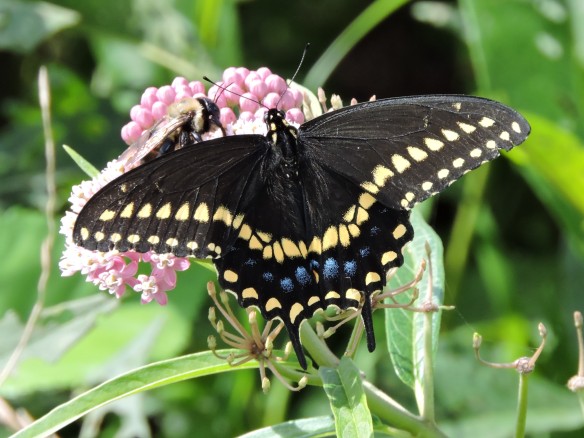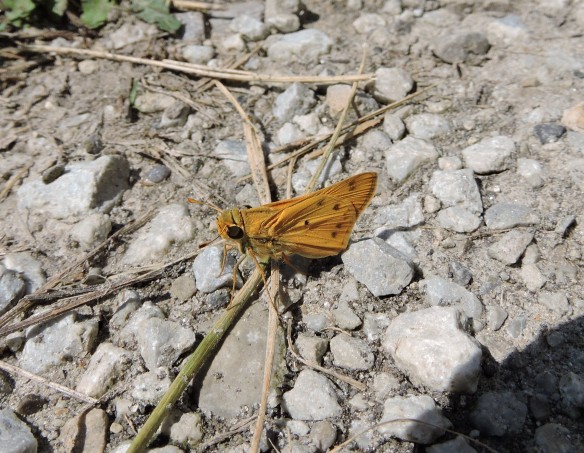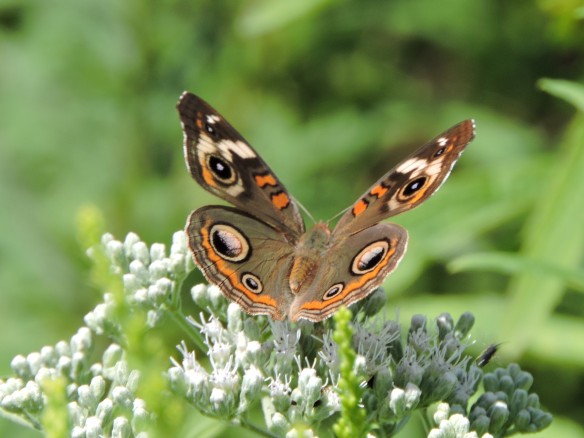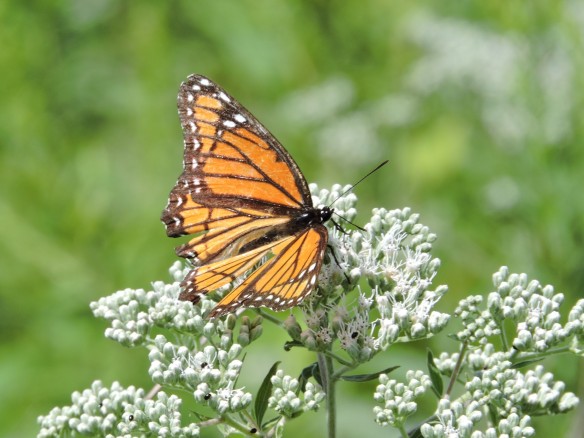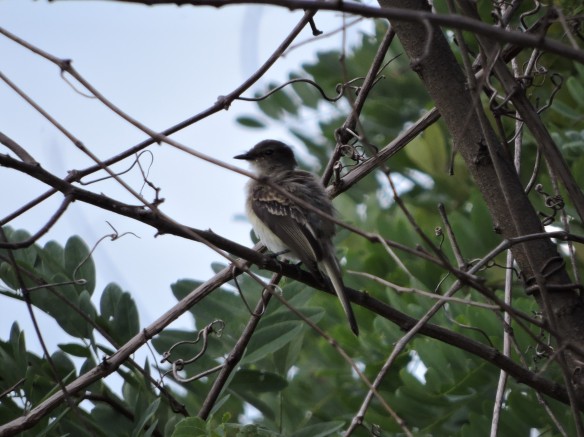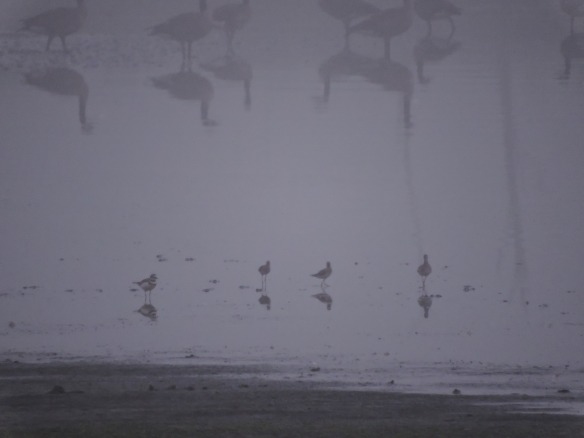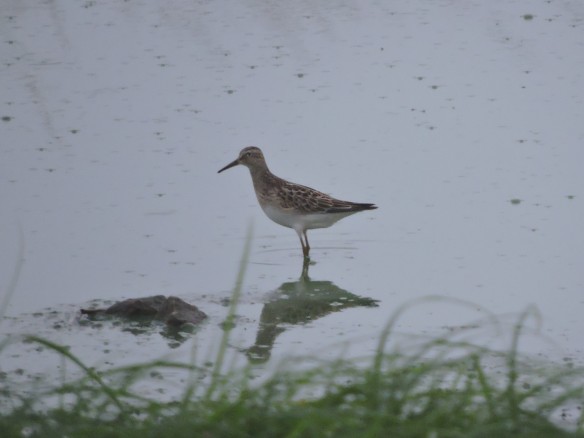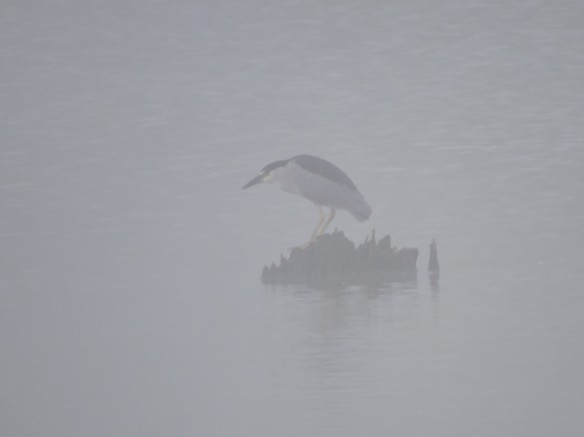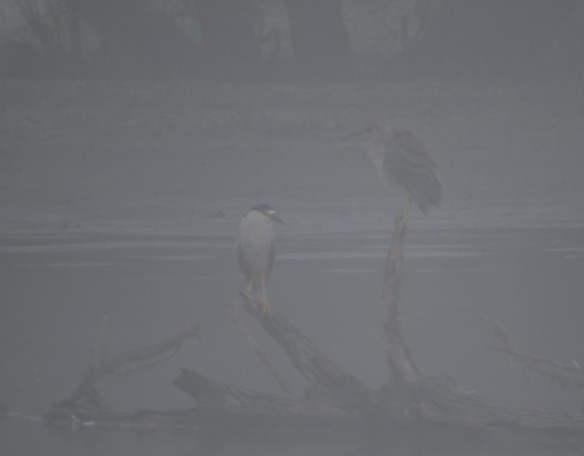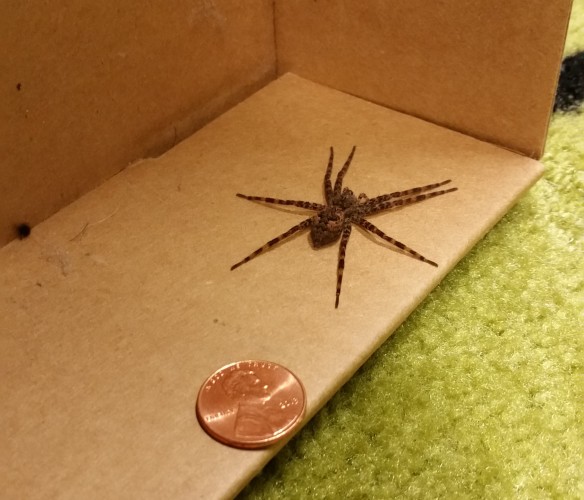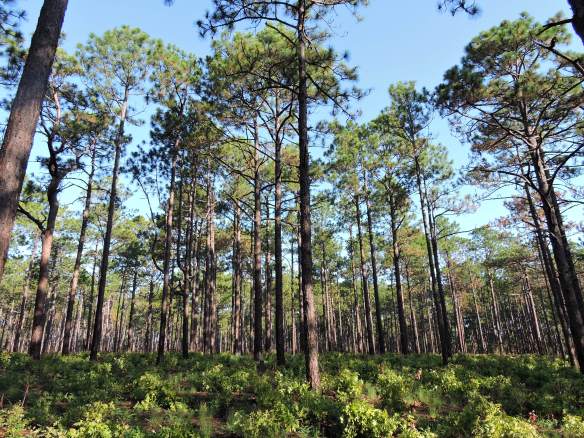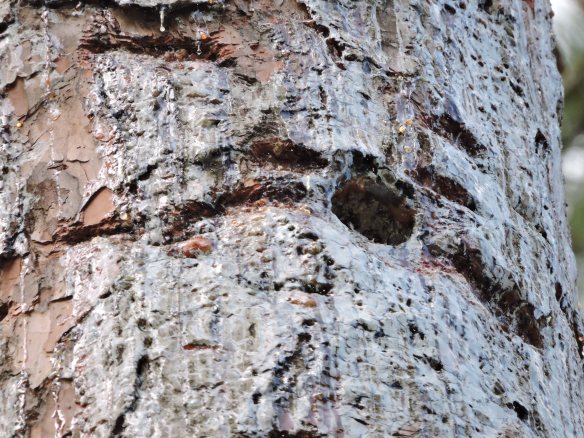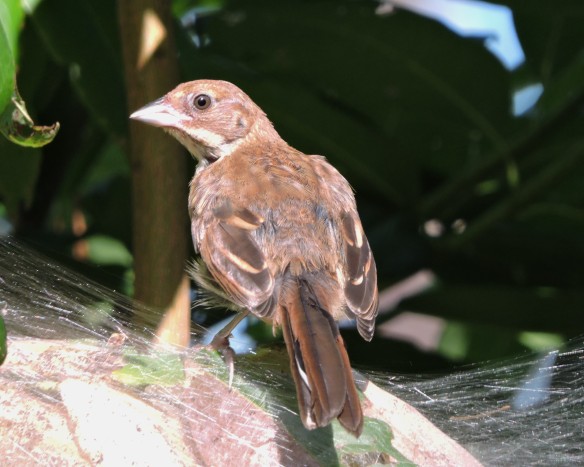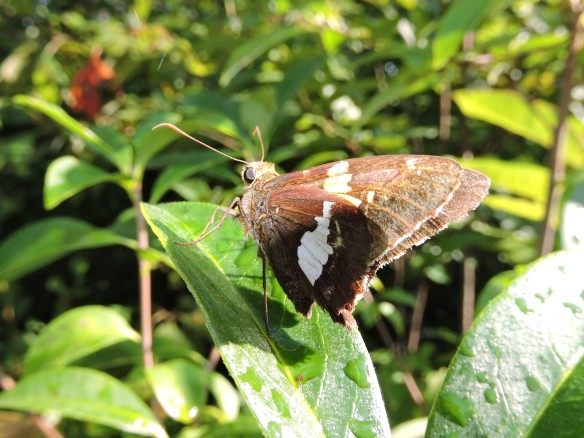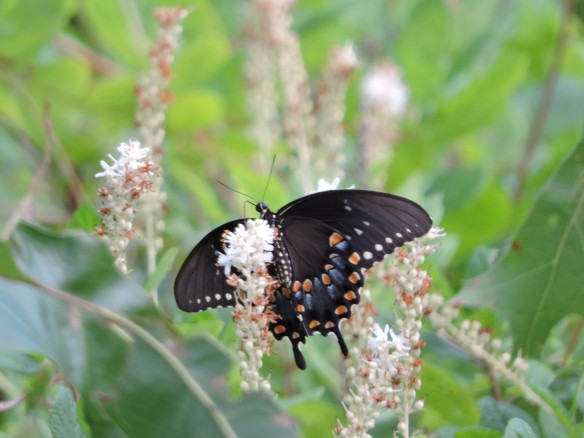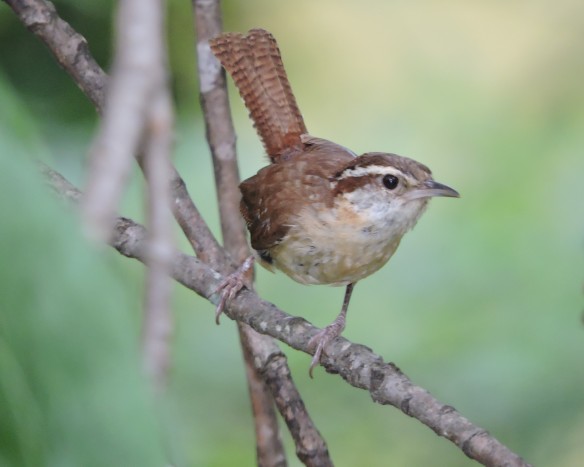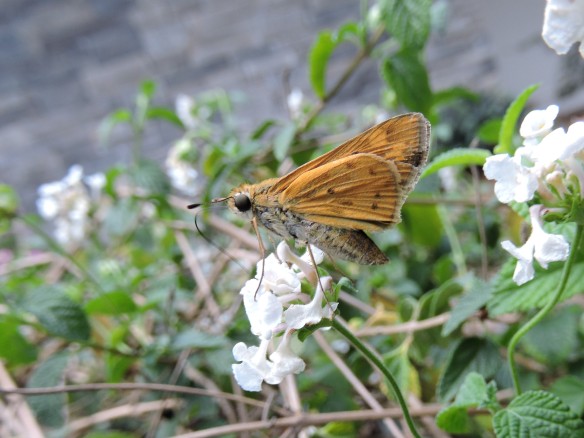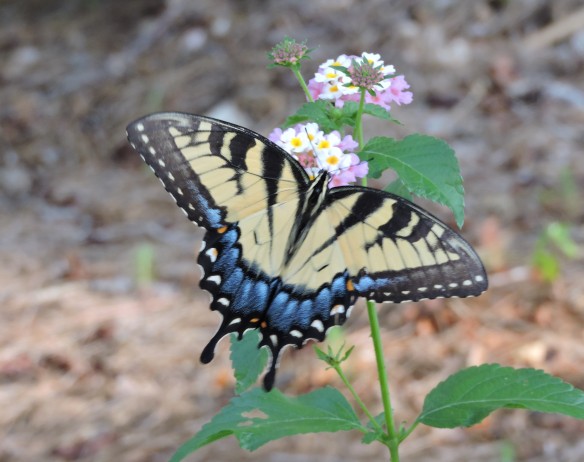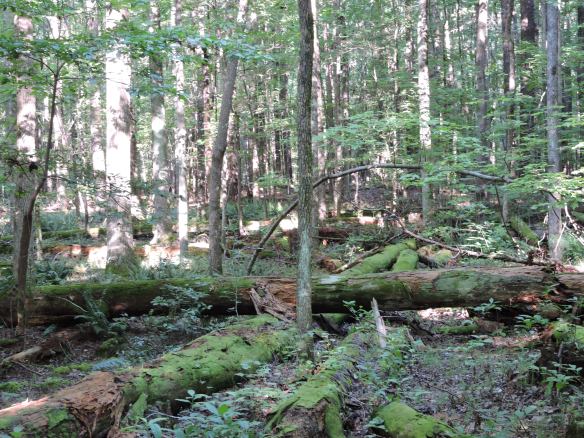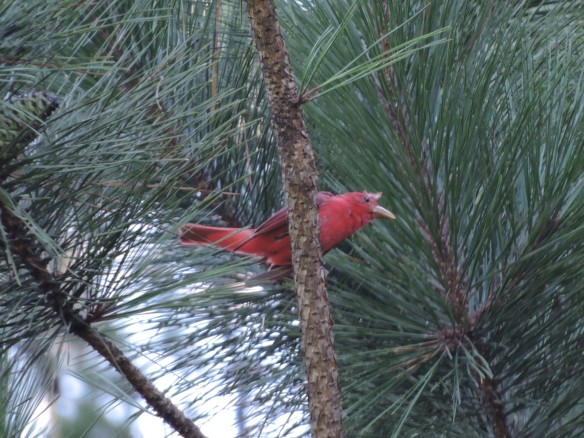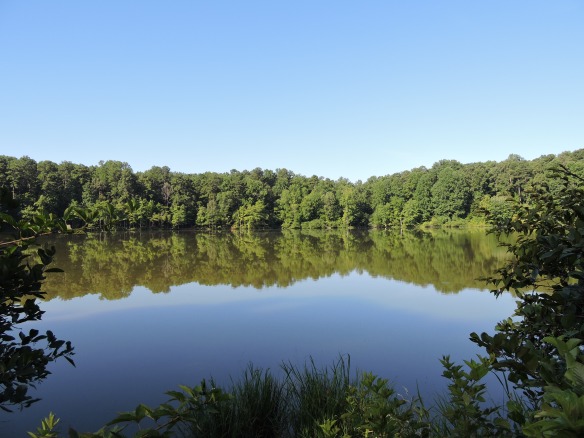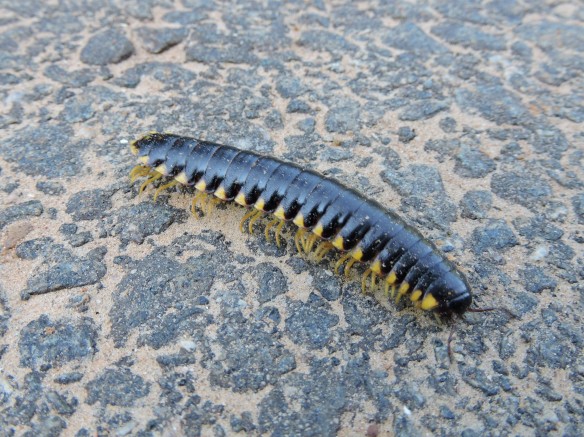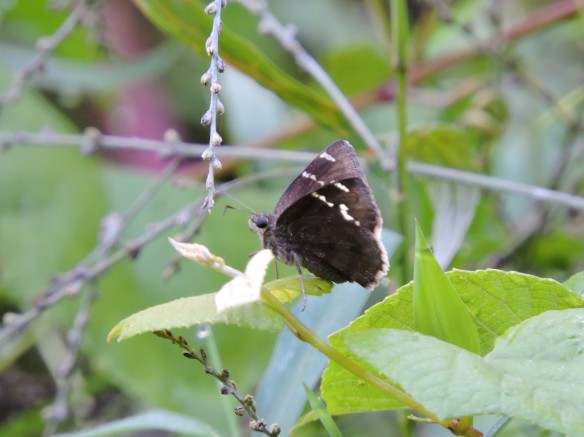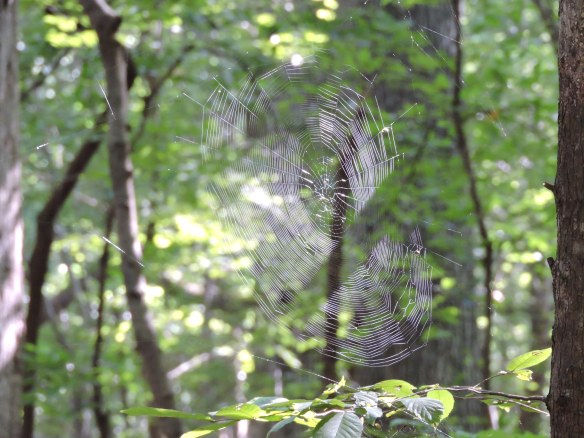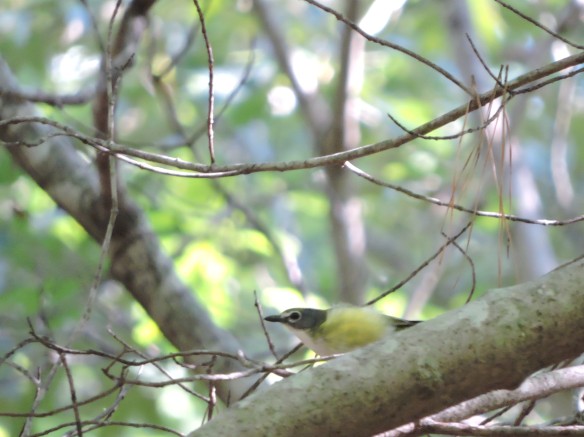Having sufficiently whetted my appetite for southeastern birds, I departed early on Sunday morning for the town of Southern Pines, which is also a very good description of the habitat I was looking for. The namesake pine species in that part of the state is the Longleaf, the only tree in which Red-cockaded Woodpeckers will call home. The Weymouth Woods Sandhills Nature Preserve, directly adjacent to the world’s largest military base (not hyperbole; it really is) Fort Bragg, is famous nationally for hosting a colony of the endangered woodpeckers.
Long story short, I did not see any “cockades” as the park rangers call them or the other open pine forest specialty species Bachman’s Sparrow. But I saw both on a previous trip a few years ago, so I wasn’t entirely bummed out. There were other good things going on.
A tree growing about 15 feet from the visitor’s center hosted a woodpecker nest. The oppressive heat index was pushing 105 degrees with humidity, so the birds were laying low and out of sight. But cockades only nest in living trees, so it was still pretty neat to see the humongous sap-flow oozing out of the hole they bored.
Despite the heat, there were plenty of birds like this young Eastern Towhee that didn’t know any better than go outside on a sweltering day. It was scratching its feet in this tent caterpillar nest to get at the larvae inside.
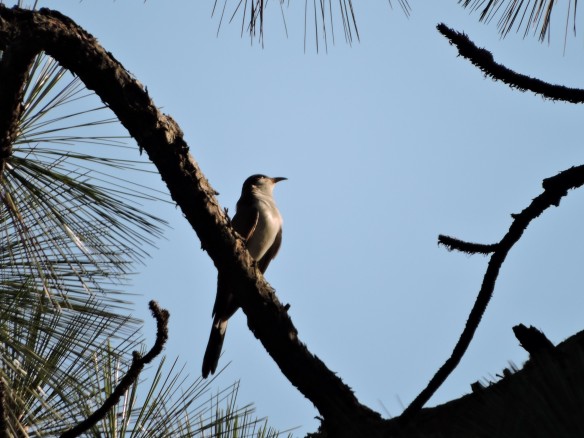
Yellow-billed Cuckoo
Another tent caterpillar specialist, this Yellow-billed Cuckoo showed itself long enough for an elusive photograph. Folklore calls these birds “rain crows” because they supposedly call more often in hot and humid weather right before a summer storm. I have read plenty of things online saying there is no basis for this claim, but several of these birds were making a ruckus, and it did storm later in the day.
I followed the trails down into a ravine with water and a little more shade, hoping that the woodpeckers would trade their preferred trees for some respite from the heat. I didn’t find anything down there besides a bunch more butterflies.
I learned that, much like birds, some species of butterflies will let you get quite close, while others won’t tolerate it. All of the Silver-spotted Skippers I saw seemed cool with my camera an inch away, while this Horace’s Duskywing (lifer) wouldn’t give me the time of day.
Swallowtails are to butterflies as raptors are to birds: big, easy to see, and impressive enough to get the average person to stop and look. The spicebush variety was another lifer.
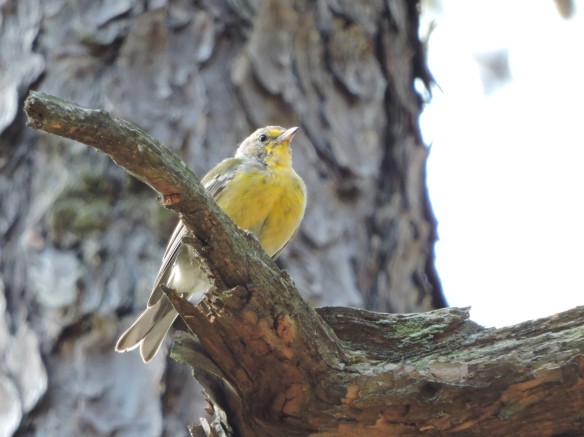
Pine Warbler
Butterflies only held my attention for so long, and I had to get back to the birds. What better species to see in a pine forest than a Pine Warbler?
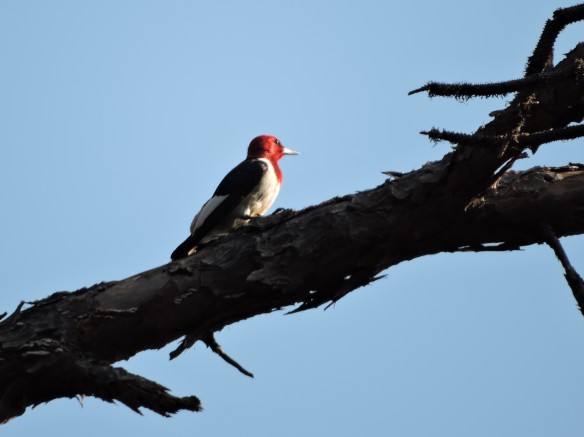
Red-headed Woodpecker
I eventually did see some woodpeckers, but they were not the right kind. Visitng Weymouth Woods might be the only time I have ever been slightly disappointed to see a Red-headed Woodpecker. But they are awesome birds, so I had to check myself, and I ended up appreciating the family group of two adults and a juvenile swooping in and out of some burned trees.
Despite dipping on the desired species, Weymouth Woods is a great place to see southeastern birds, including many, many more Summer Tanagers and Brown-headed Nuthatches (which are literally everywhere once you learn their squeaky dog toy calls). The rangers there are also great and can provide a ton of insight into the habits and life history of they specialty species at the preserve. Around 50 miles from Raleigh, I highly recommend it if you are ever in the Triangle area.
That wraps up my out of state birding adventures. But it’s been a while since I have seriously birded at home, and we’ve got shorebirds coming in from the north by the day. Stay tuned! The summer doldrums are almost over…
